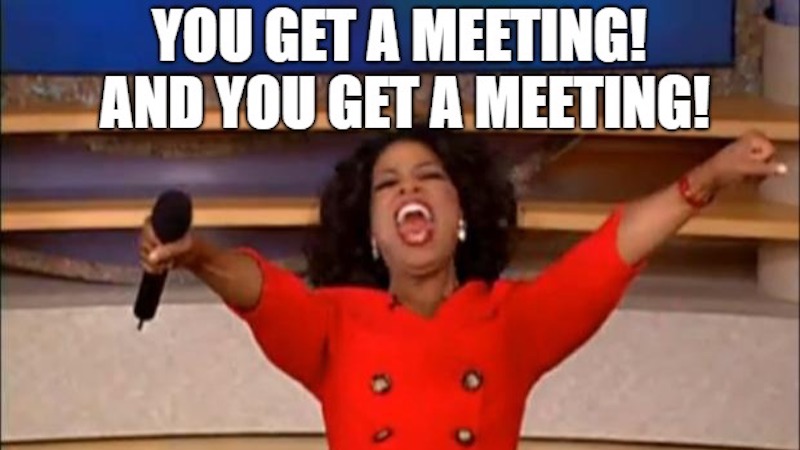I have been a teacher for over 20 years. Do you know how many times I have been truly inspired by professional development? Well, you can count them on two hands. The other hundred or so times, I felt worse than I did when I entered the sessions. The words “bored,” “frustrated” and “irrelevant” come to mind.
18 billion dollars are spent on professional development in the US each year. With such a hefty price tag, it must be working, but teachers don’t seem to think so. In fact, a study by the Gates Foundation found that only 29 percent of teachers are satisfied with professional development, and only 34 percent think that it has improved.
With the extreme dissatisfaction of the very people it is supposed to help, what can be done? Teachers know what they need to learn, but most times, they don’t really have a say in the topics chosen. This is where the disconnect occurs.
Here are 10 kinds of PD teachers actually want.
1. How to talk to lawnmower parents
Lawnmower parents seem to have multiplied in this decade. The positive here is that they adore their children and want to be involved: really, really involved. So, do we answer their texts at all hours of the night? Do we politely tell them that their involvement may be hindering their children’s development? Do we hand them articles to read? We need a little help here.
2. Training on Teachers Pay Teachers
Due to the rise of cash-strapped school districts, school-owned textbooks and materials are in short supply. This has created a mega-business for Teachers Pay Teachers. Every teacher I know is a buyer, seller or both. It would be nice to have a session to share the best freebies, lessons and resources available.
3. Ways to de-stress
Research indicates that 61 percent of educators find work “always” or “often” stressful. The mental health of teachers is suffering. Administrators need to take note by scheduling sessions that teach strategies for self-care and relaxation. A session of massages or a staff walk might do wonders for reducing anxiety. Instead, we have staff development that increases our stress by piling something else on our plates. This is counterproductive. Helping teachers with their stress and reducing anxiety will increase overall morale and productivity.
4. Getting real on classroom management
Almost every teacher’s biggest problem usually has something to do with classroom management. Here are some of the things I hear my colleagues say:
“I have a student that bites me. What do I do?”
“His disruptive behavior really makes it hard for the other students to learn.”
“I have parents complaining about a child who is constantly hitting, but I have done everything I know how to do.”
“I leave crying every day because of the behavior of my class.”
Teachers need expert help for the escalating classroom behaviors that we now see. If there are strategies to help, we want to be taught them. Bring in the expert teachers or counselors to share their knowledge.
5. Build your own professional development
One idea is for teachers to set a professional development goal and use the PD minutes to research and talk with colleagues the answer. Most teachers I know have a TBR pile a mile high—they just need the time for the research.
6. How to conduct a parent-teacher conference
My parent teacher conferences go something like this: I go over data and achievement for about 5 minutes, and the rest of the allotted 20 minutes is spent listening to the child’s prenatal history. It would be helpful to have effective parent teacher conferences modeled during staff development.
7. Trauma-based teaching
According to the National Child Traumatic Stress Network, close to 40 percent of US students have been involved in some sort of trauma such as physical, sexual and domestic violence abuse. So, we have more and more traumatized students in our classrooms, yet we do not know the best ways to help them. Strategies and ideas are needed now in order to assist our most damaged students.
8. Time management secrets from teachers who’ve been there
If there is one thing that teachers do not have enough of, it is time. There are just too many teacher tasks to complete in one day. One great use of professional development minutes would be to instruct teachers how to have more of it…time, that is. Prioritizing and cutting corners are essential skills to not feeling overwhelmed as a teacher. Proactively managing tasks doesn’t always come naturally. Learning ways to save and have more time would be a valuable professional development opportunity.
9. Content- and grade-specific teaching strategies
One main problem of professional development is that it adheres to a one-size-fits-all philosophy. A kindergarten teacher, Ariana L., from Louisiana says, “I leave professional development so mad because NOTHING talked about applies to my grade level. It is frustrating.” Strategies to teach concepts should apply to grade level specific content or it is a waste of time that teachers don’t have.
10. No professional development
I’m just saying….most of the teachers I know would tell you that the best professional development sessions they have ever had are when the sessions are cancelled, and they are allowed to work on the many teacher tasks that are keeping them up at night. Crossing a few things off the never-ending Teacher To-Do list is an invaluable use of time.
In order to involve teachers in the decision-making process about staff development, surveys can be given. The kicker is the information gathered must be used.
Let’s give the teachers what we want. We deserve it.
What’s your take on the PD teachers want? Come and share in our WeAreTeachers HELPLINE group on Facebook.
Plus, check out “Dear Administrator, Please Stop Taking Away Teacher Planning Periods.“


